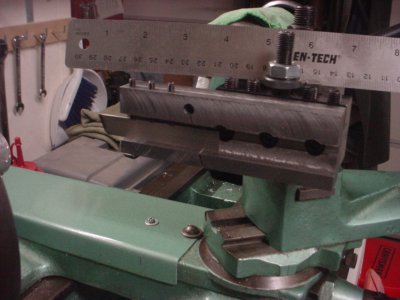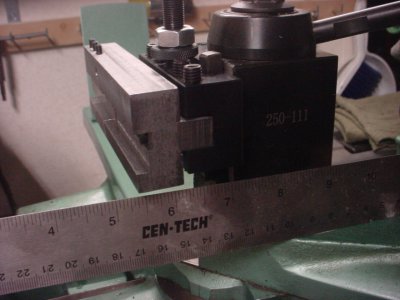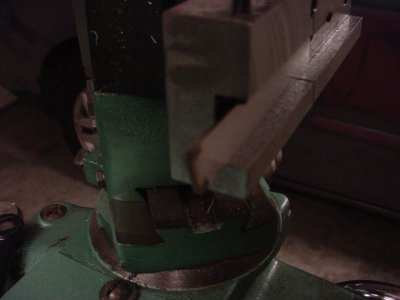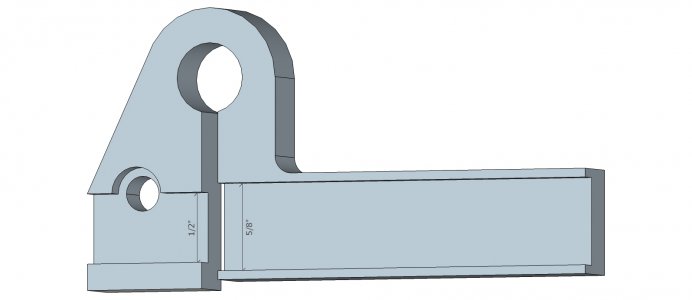- Joined
- Oct 17, 2018
- Messages
- 922
I needed a parting tool that would give a little, so I based my design on designs I found on the internet.
Side view. This is steel. Not sure of type; it's made from scrap.

Back view showing how it's mounted to the tool holder. This is two parts: the blade holder and a bar I milled and drilled and tapped (1/4-20) to bolt to the blade holder that holds the whole assembly in the tool holder.

Front view. Not a very good shot, but it does show the thickness.

I took a practice cut on some 1" diameter aluminum rod. It cut really nice, but it "dished out" the cut. My colleague at the adult school machine shop told me the small parting tool (it's the thin one), coupled with the thick holder and the set screws (#8-32) causing the blade to be slightly crooked, didn't allow it to flex much (I saw it flex very little) so the tool "wandered" a bit. For smaller diameters it should be fine. A thicker blade would probably work better as well. The relief hole that allows the flex might be a little small, too. I've flattened the tips of the set screws so the blade sits straight.
Side view. This is steel. Not sure of type; it's made from scrap.

Back view showing how it's mounted to the tool holder. This is two parts: the blade holder and a bar I milled and drilled and tapped (1/4-20) to bolt to the blade holder that holds the whole assembly in the tool holder.

Front view. Not a very good shot, but it does show the thickness.

I took a practice cut on some 1" diameter aluminum rod. It cut really nice, but it "dished out" the cut. My colleague at the adult school machine shop told me the small parting tool (it's the thin one), coupled with the thick holder and the set screws (#8-32) causing the blade to be slightly crooked, didn't allow it to flex much (I saw it flex very little) so the tool "wandered" a bit. For smaller diameters it should be fine. A thicker blade would probably work better as well. The relief hole that allows the flex might be a little small, too. I've flattened the tips of the set screws so the blade sits straight.


